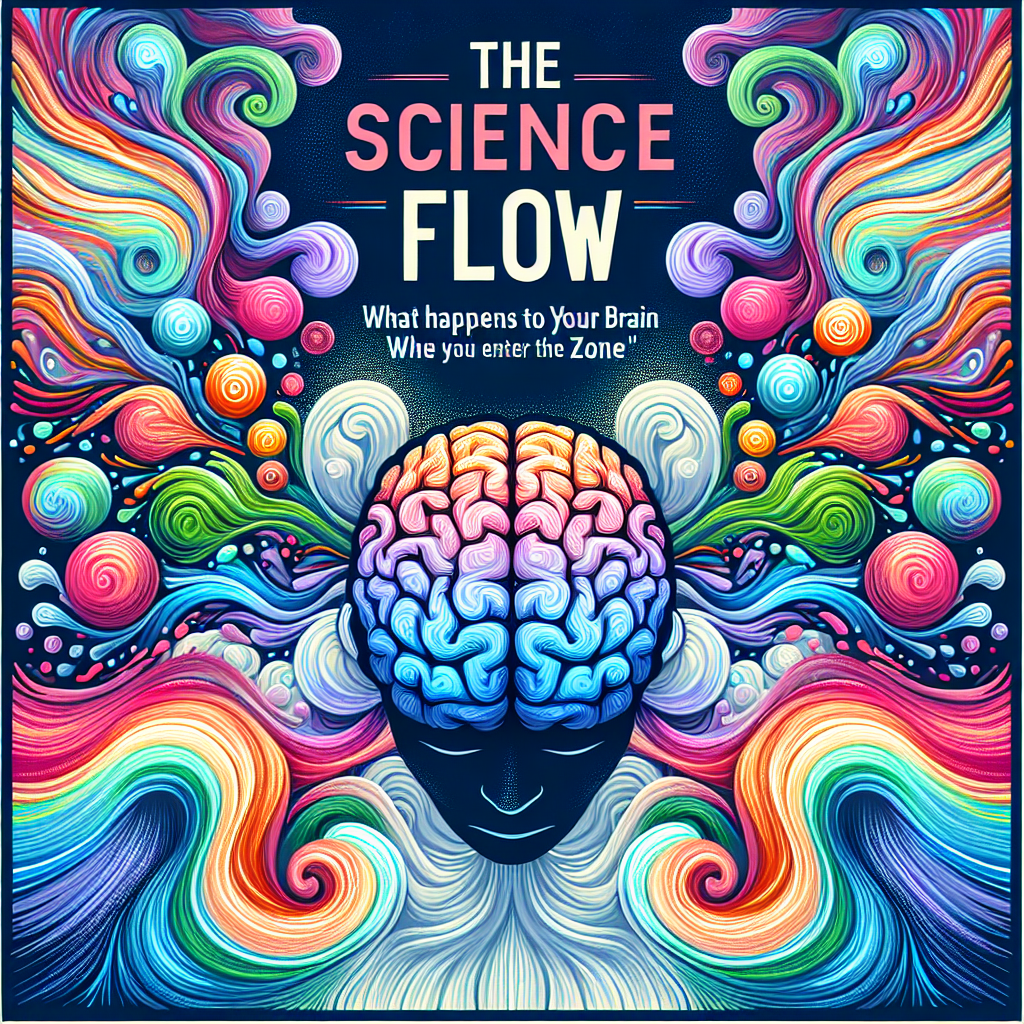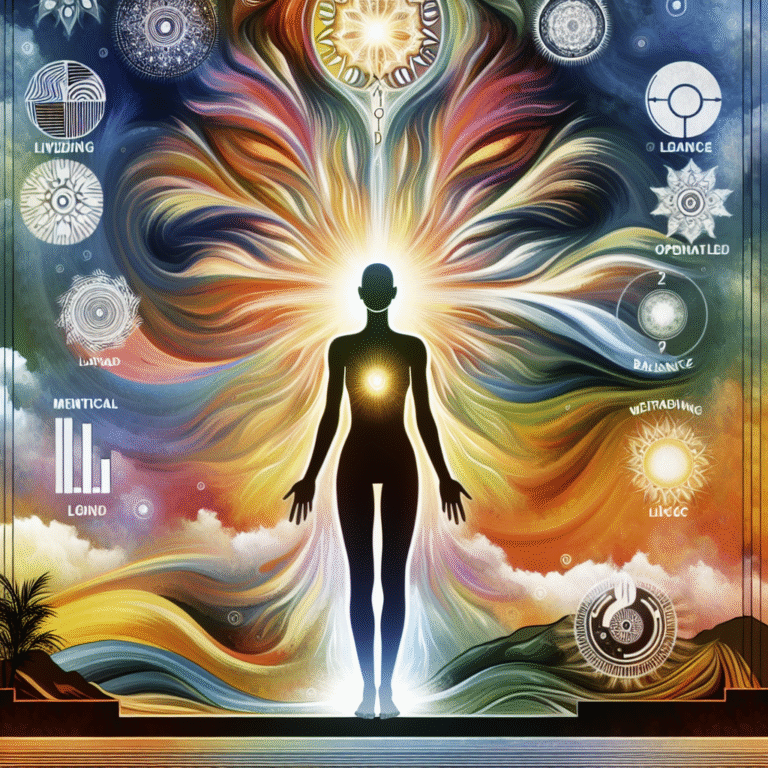
Introduction
Imagine a state where your focus sharpens, distractions fade, and every action seems effortless. This elusive experience, often referred to as "the zone," is rooted in what psychologists call flow. Understanding The Science of Flow: What Happens to Your Brain When You Enter the Zone can unlock unparalleled creative and productive potential, allowing individuals to perform at their peak. This article delves deep into the science behind flow, exploring its neurological underpinnings, real-world applications, and practical strategies for entering this powerful state.
What is Flow?
Flow is a psychological state characterized by complete immersion and involvement in an activity. Coined by psychologist Mihaly Csikszentmihalyi in the 1970s, this concept describes experiences where individuals feel fully engaged, lose track of time, and achieve a high level of satisfaction. A noteworthy aspect of flow is its balanced relationship between challenge and skill, where the tasks at hand are neither too daunting nor too mundane.
Key Characteristics of Flow
- Intense Focus: Complete concentration on the task, making distractions negligible.
- Loss of Self-Consciousness: The sense of self dissolves, allowing for pure engagement.
- Altered Sense of Time: Time may seem to warp, with hours feeling like minutes.
- Intrinsic Motivation: An activity becomes rewarding in itself, rather than for its outcome.
The Neuroscience Behind Flow
Understanding The Science of Flow: What Happens to Your Brain When You Enter the Zone involves exploring the brain regions and neurochemicals involved.
Brain Regions Associated with Flow
- Prefrontal Cortex: This area is involved in decision-making and self-regulation. During flow, its activity diminishes, leading to a reduction in self-doubt.
- Motor Cortex: Heightened activity in this area enhances physical coordination and skill execution.
- Limbic System: This system manages emotions. In flow, positive emotions override negative ones, enhancing performance.
Neurochemicals Involved in Flow
- Dopamine: Increases motivation and enhances pleasure.
- Norepinephrine: Heightens alertness and focus, sharpening cognitive function.
- Endorphins: Contributes to feelings of euphoria, enhancing enjoyment of the activity.
- Anandamide: Sometimes called the "bliss molecule," it plays a role in pleasure and pain relief.
Case Study: Athletes and Flow
Consider the performance of Olympic athletes during competitions. Many report experiencing flow states, allowing them to perform extraordinary feats. For instance, runner Eliud Kipchoge noted that during his historic sub-two-hour marathon, time seemed irrelevant; he felt one with the rhythm of his stride. This instance illustrates how the unique blend of neurochemicals and brain activity facilitates peak performance.
The Flow Channel: Balancing Challenge and Skill
The Science of Flow: What Happens to Your Brain When You Enter the Zone is not just about individual experiences; it’s about finding the sweet spot where challenge and skill align. This balance is depicted as the flow channel, a concept that Csikszentmihalyi identified.
The Flow Channel Chart
| Skill Level | Challenge Level | Experience |
|---|---|---|
| Low | Low | Boredom |
| Low | High | Anxiety |
| High | Low | Apathy |
| High | High | Flow |
In the flow channel, individuals find themselves fully engaged, achieving optimal performance and satisfaction.
Real-World Applications of Flow
Understanding flow isn’t just an academic exercise; its applications are diverse and impactful in various fields.
Workplace
Organizations are beginning to recognize the importance of creating flow-inducing environments. This includes:
- Task Variety: Offering challenging tasks to keep employees engaged.
- Autonomy: Giving workers freedom to choose how to complete their tasks.
- Feedback: Providing immediate feedback helps individuals adjust and optimize their performance.
A study in a tech company revealed that employees reported heightened creativity and productivity when working on challenging projects that aligned with their skill level.
Education
Educators can also harness the power of flow by designing curricula that nurture student engagement. Techniques include:
- Project-Based Learning: Encouraging students to tackle real-world problems.
- Choice-Based Assignments: Allowing students to select topics of interest fosters intrinsic motivation.
Arts and Creativity
Artists, musicians, and writers often enter flow states during their creative processes. For example, renowned composer Ludovico Einaudi describes his composition routine as a dance with flow. By eliminating distractions and immersing himself in the music, he taps into a profound creative energy.
How to Enter the Flow State
Achieving flow is not purely serendipitous; there are strategies and techniques that one can employ.
1. Set Clear Goals
Working towards well-defined objectives helps streamline focus, making it easier to enter the flow state.
2. Minimize Distractions
Create an environment conducive to concentration. Turn off notifications, find a quiet space, and clear clutter.
3. Maintain a Consistent Routine
Establishing a routine can help signal to your brain when it’s time to enter the flow, making it more likely to occur.
4. Use Mindfulness
Practicing mindfulness and meditation can enhance your ability to concentrate, allowing for easier entry into the flow state.
5. Gradually Increase Challenge
Start with tasks that align with your skill level and progressively introduce challenges to maintain engagement without overwhelming yourself.
Conclusion
The Science of Flow: What Happens to Your Brain When You Enter the Zone reveals an extraordinary interplay of neurobiology, psychology, and creativity. By understanding the mechanisms behind flow, individuals can unlock their potential, enhancing productivity, creativity, and overall satisfaction in their pursuits. Whether you’re an athlete, an artist, or a professional, embracing the strategies for achieving flow can transform your experience and output.
FAQs
1. What are the benefits of experiencing flow?
Flow enhances creativity, productivity, and satisfaction. It leads to improved performance and greater enjoyment in activities.
2. Can anyone experience flow?
Yes, anyone can access flow, although it may require practice and specific conditions to do so.
3. How can I measure if I’m in flow?
Indicators include a deep sense of focus, loss of self-consciousness, and an altered perception of time.
4. Are there negative effects of flow?
While flow is generally positive, getting caught in a flow state for prolonged periods can lead to burnout. Balance is crucial.
5. How can I foster flow in my daily life?
Setting clear goals, minimizing distractions, and gradually increasing challenges are effective strategies to cultivate flow in everyday activities.
By employing these insights and techniques, you not only gain a deeper understanding of The Science of Flow: What Happens to Your Brain When You Enter the Zone, but you also empower yourself to actively seek and experience the transformative power of flow in your life.














